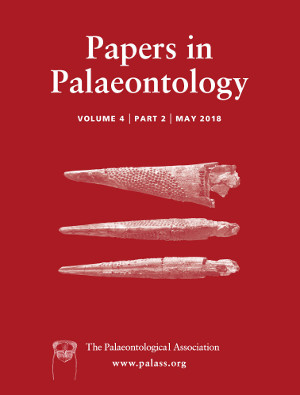Reg. Charity No. 1168330

Two new genera and species of Cyprinodontiformes from the Miocene of Tucumán, Argentina, are described: Tucmanableps cionei and Sachajenynsia pacha. Both exhibit sexual dimorphism, indicated by the modification of the male anal fin into an intromittent organ; tricuspid teeth in the jaws; abdominal pelvic fins and other features that demonstrate a relationship with the family Anablepidae. Males of Sachajenynsia pacha gen. et sp. nov. present modifications of the anal fin, herein interpreted as an incipient gonopodium, whereas the anal fin of Tucmanableps cionei gen. et sp. nov. is modified into a complex gonopodium with a median distal plate, which is unique among the Anablepidae. In extant genera of the family, modification of the anal fin into an intromittent organ is related to internal fertilization; this condition is inferred for S. pacha but was clearly the reproductive mode of T. cionei. In our phylogenetic analysis, S. pacha is recovered as the sister group of all anablepids with evident internal fertilization, while T. cionei forms a clade with Anableps species. The occurrence of two new anablepid genera showing distinct and unique morphologies suggests that the fossil diversity of the Anablepidae may be higher than the extant one. Also, the new taxa were found in open lake deposits with coastal and inner lake sediments of the Río Salí Formation associated with the Miocene Entrerrian–Paranense Marine Ingression, supporting the idea that coastal environments and brackish waters are related to the generic diversification of the Anablepidae, as was suggested for the species of Jenynsia.